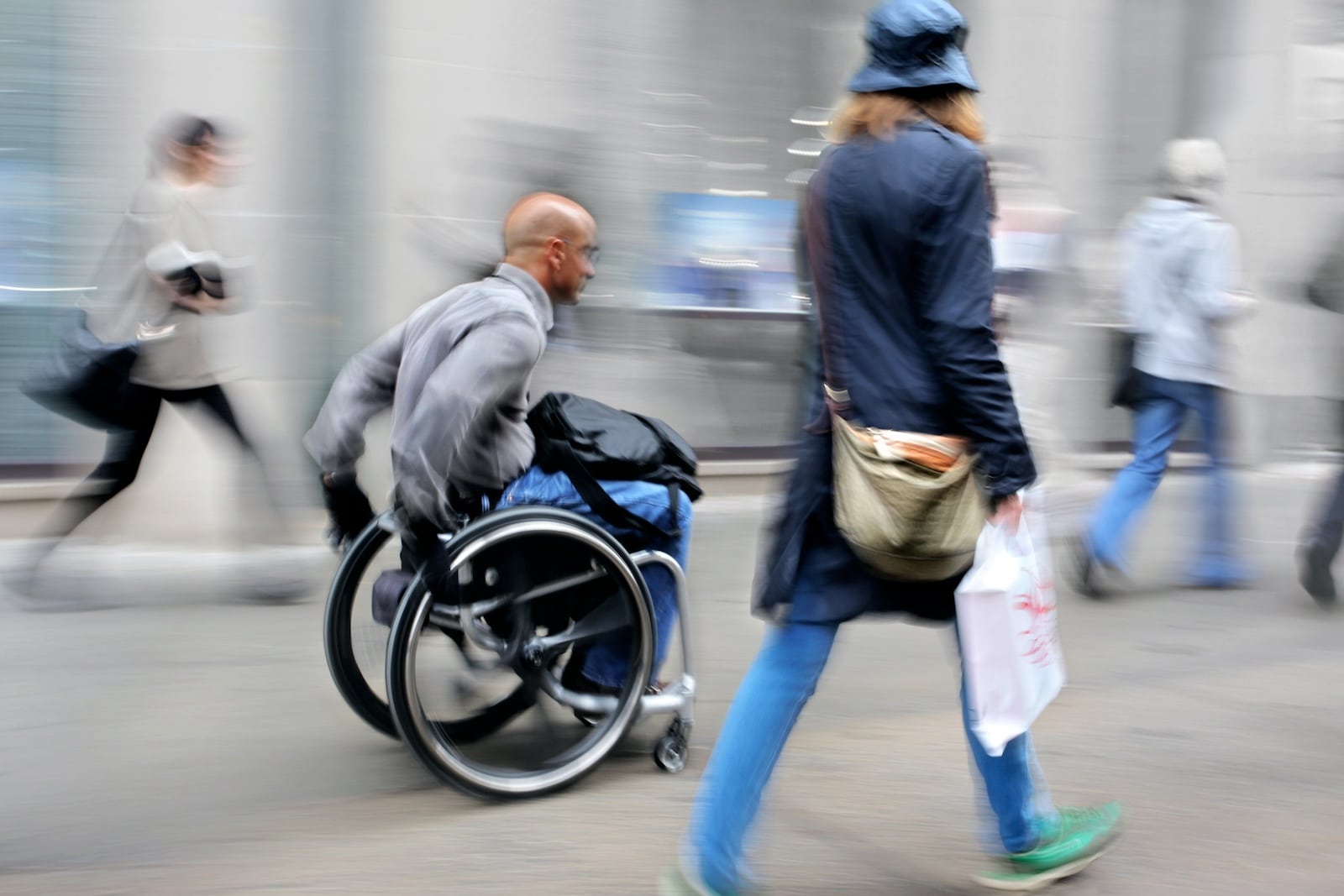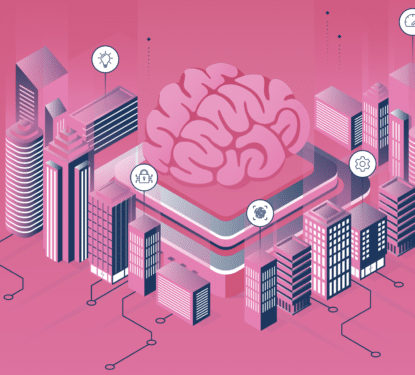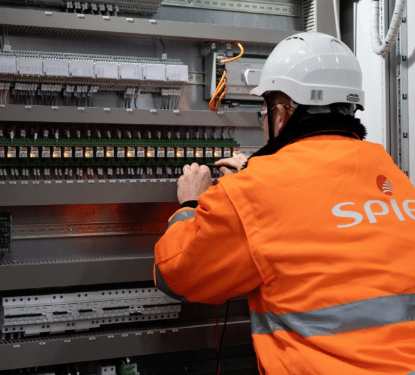For many, creating an inclusive smart city means planning for the masses. In doing so you can elevate the urban population in similar ways to what we have seen in previous technological shifts. Others, however, point out that cities have not evolved to be inclusive, and they propose that focusing smart development on urban elements that are currently failing minority groups offers a much better way to achieve inclusivity.
In a recent panel discussion on ‘The Invisible Smart City,’ urban designer Gil Peñalosa said, “we currently design our cities as though everyone is 30 and active”, leading to biased, inaccessible urban design that excludes what he calls the ‘silent majority’. This highlights an important point about inclusivity in our cities.
"What would cities look like if they were designed by mothers?" Most cities seemed built by 'martians' who have no parents or children. No more cities exclusive for 30 yr old athletic; let's create cities for ALL. @880CitiesOrg https://t.co/ck6nzjVRuy pic.twitter.com/JPK69OIctX
— G_Penalosa (@Penalosa_G) August 27, 2018
“After the rise of several Smart City initiatives in different parts of the globe, the central point of these kind of initiatives has progressively changed to considering the role that citizens must play in a Smart City. Even considering this new approach, it is rare to find academic research and industry products that deal with accessibility issues, as is the employment of Information and Communication Technologies (ICT) to help persons with disabilities in the urban space.”
“To be considered “smart”, a city must reinforce the participations of everyone recognizing the diversity of citizens, struggle against the segregation of minorities, and try, as much as possible, to eliminate, not only physical but also digital barriers. That is what we call Inclusive Smart City,” state João Neto and Sergio Kofuji in the 2016 paper: Inclusive Smart City: An Exploratory Study.
In this speech, Dr Victor Pineda, urban planner and president of World Enabled, warned that as things stand with lack of inclusion in urban planning, we are going to globally fail to meet the UN Sustainable Development Goals set by the New Urban Agenda. “If we don’t work towards a future to which all citizens have access, we risk creating entrenched inequalities, divisions, and system failures,” he said, highlighting the failings of smart urban infrastructure for people with disabilities.

Today, 1 in 7 people around the world live with some sort of disability. Furthermore, this large minority is most prevalent in older age groups, which are growing faster than all younger age groups. According to the UN, there are 1 billion over 60s in the world today, a figure that is expected to reach 3.1 billion by 2050. This age group makes up a huge proportion of citizen in certain countries like Japan, for example, where 27% of the population is currently over 60 years old. Do smart cities work for the elderly and disabled:
- Where does our world of touchscreen interfaces leave the visually impaired, and how will all this voice control help the speech and hearing impaired?
- How does someone in a wheelchair use eye-level retinal scanners for access control, or an arm amputee navigate a world of fingerprint recognition?
- Will driverless cars really serve those who are already struggling to get to grips with new technologies like Uber?
It is not just the disabled and the elderly that might be left behind in the smart city. Nearly 1/2 of the world's population live under the poverty line (on less than $2.50 a day), while more than 1.3 billion of those live in extreme poverty (on less than $1.25 a day). Povety is especially present in urban areas and often concentrated in specific neighborhoods, cities have failed to address this and other issues have arisen concurrently.
Official crime statistics show that recorded crime is not evenly distributed between geographical areas. It is higher in inner-city areas and on council estates compared to suburban areas of cities and towns. Do our current smart city strategies try to solve these imbalances:
- Do cashless checkout stores serve those who are not in a financial position to maintain a bank account?
- How will someone who can’t afford a smartphone interact with the new smart urban landscape?
- Will smart city infrastructure be deployed equally in areas with low crime rates compared to those with high crime rates?
The answers to these questions do not usually offer much encouragement for the groups being left behind as our smart cities evolve in ways that only suit the majority. Those in control of our smart evolution will, more often than not, hide behind the data, and therein lies the problem - the data that is driving the development of smart technology is bias. It serves economic objectives that favor the majority. It is largely compiled by people from the majority and governed by those who do not give enough weight to the various minorities.
Nabil Eid, Strategic Disability Inclusion ICT Accessibility consultant for Ruh Global, highlights five key challenges facing Smart Cities initiative for disability sectors. He sees a severe lack of awareness regarding e-accessibility for persons with disabilities by smart city stakeholders. This leads to a lack of data or guiding policies/principles, which means smart city proposals lack adequate accessibility features and benchmarks. And finally, he sees a sector is rife with poor project execution, that leads to the failure to incorporate features for persons with disabilities.
The situation does not need to be this way, however, and neglecting groups like those with disabilities does not even serve the economic objectives, such as cost-saving, that many seem to think it does. According to the International Labour Office, applying “Universal Design” principles at the initial stages of planning and design will create between zero and 1% additional cost to smart city projects.
Furthermore, “it is a great deal more expensive rebuilding, renovating or redesigning existing inaccessible infrastructure or facility to make them more accessible and inclusive. The cost of not incorporating accessibility/universal design can also be significant. Taking into account the loss of human capital and opportunity cost incurred due to inaccessibility, economies stand to lose a great deal more when significant groups, such as persons with disabilities are excluded from participation,” says Eid.
The smart city has an opportunity, as well as a responsibility, to incorporate groups that have been failed by the traditional urban planning. By focusing on the power of smart technology to solve these gaps in public services a city can benefit from the productivity and spending power of these latent sections of their population. Rather than just designing the ‘ideal’ city for the majority and wondering why some people are being left behind, urban planners must work collaboratively with all sections of the population to build truly inclusive smart cities for the future.



